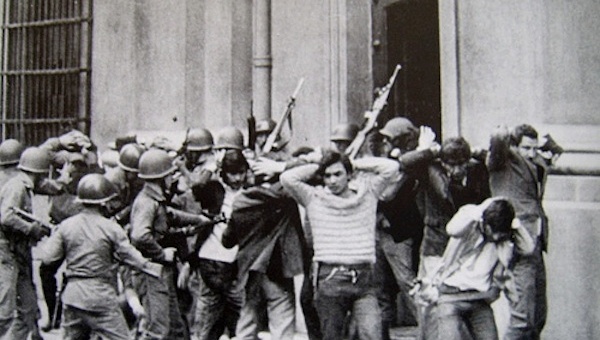The reading this week focused on a particularly bloody and divided time in Latin American history, between the 1960s and 1980s, where guerrilla warfare reined. Newly formed socialist groups fought against their states, with civilians, and rural peoples in particular, becoming the main targets of the violence. These groups rose out of a political climate of inequality, where it seemed to many as though the governments in place only served to maintain these differences through corruption. Many of these left-wing groups, such as Sendero Luminoso in Peru, were seen as threats to the state in rural areas, where government legitimacy had never been completely accepted. In Peru, violence erupted and the country became engulfed in a civil war. Both groups had steady support bases and sources of income (Sendero Luminoso controlled a large portion of the cocaine trade out of Peru), which allowed the war to last decades, becoming a stable part of life in highland Peru.
From these readings we can also see the stratification that existed in Peru at the time. In Mario Vargas Llosa’s short piece, he notes how alien and shocking the violence among indigenous people seems to him. He notes how peaceful his life in the city is compared to the ongoing war in the Andes. This is indicative of the problem of inequality, where the urban and rural communities were so separated from one another despite their close proximity. Even as the elites of Lima go about their lives, they were sheltered from the despair experienced in the highlands. On the flip side, rural people, as Cameron notes, were not interested in events in Lima and were only concerned by their locality. This is a phenomenon that Fujimori saw as a willful disregard for the authority of the state. This separation is what gave rise to violent conflict. Sendero Luminoso’s attacks on Lima itself sent a message to close that gap, showing that both groups exist in the same country
It was sad to learn about the large role that the Cold War politics had to play in this era, with both the United States and the Soviet Union funding and aiding their respective sides. The socialist guerrilla armies could count on the support of Moscow, while their enemies, governments who most of which had turned authoritarian, could rely on the helping hand of U.S. There were a lot of factors surrounding the breakout of this horrific time in Latin America, as is summed up well in the textbook: “The unrest they faced could be attributed to both local and global patterns – dimming economic prospects combined with youth culture, idealism unleashed by the Cuban revolution, and cold war politics.” It truly was a dangerous mix.

The Cold War politics taking place in Latin America during this time period was sad, as you pointed out. The Soviet Union and United States essentially funded civil wars in many countries because they had differing ideologies.
LikeLike
You suggest (perhaps implicitly) that division among a country, both geographically and financially, can cause political problems to worsen. I agree that this division and inequality is dangerous for a country. Look at Canada and its own issues – while many view Canada as a developed and economically stable country, the territory of Nunavut (as well as many First Nation reserves) is doing as poorly as some of Africa’s poorest nations. Citizens in the wealthier parts of Canada either are unaware of this, or they ignore it, but the issue remains. Due to Canada’s rocky past with aboriginal peoples, as well as Nunavut’s (and First Nation reserves’) current estrangement from the country (both geographically and financially), the relationship between the government and the people who live in these ares is fairly volatile. While a bloody revolution or civil war is unlikely to occur, the issue won’t necessarily improve any time soon. I mean, Canada has had centuries to solve the issues of indigenous oppression and inequality, so what makes now a good time to start actually solving these issues? The bottom line is that division in a country (such as the geographic and financial split in Peru) certainly sets the stage well for political woes and instability.
LikeLike